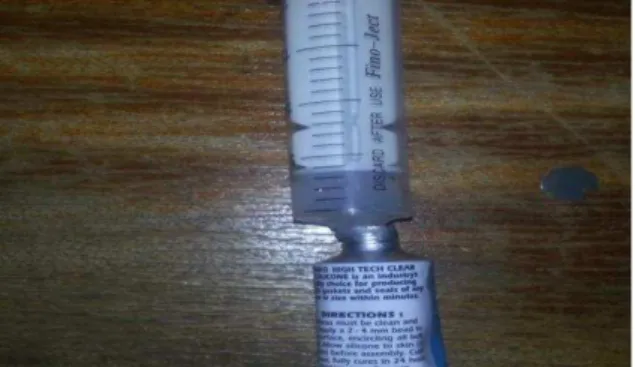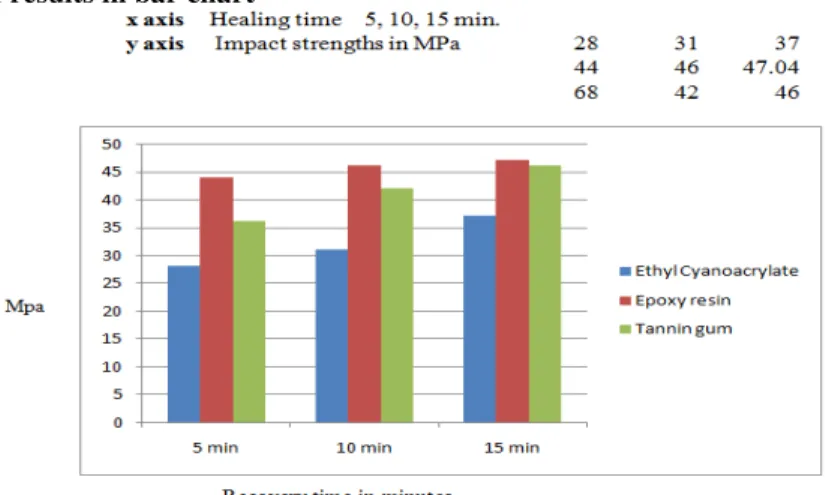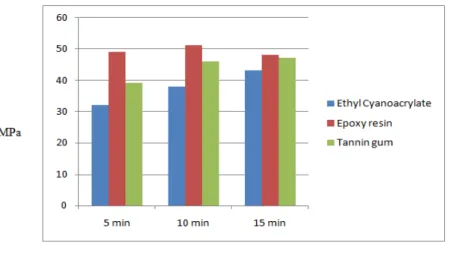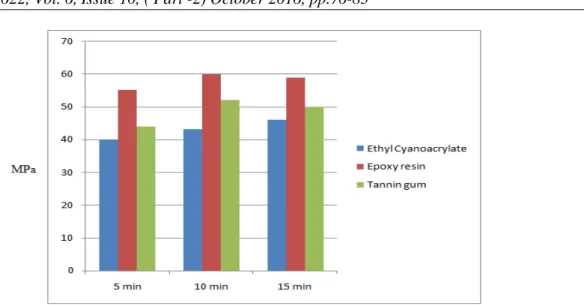Improving Impact Strength Recovery of Fractured and Healed
Rice Husks Fibre Reinforced Polypropylene Composites.
Odhong, O.V.E*
1;Muumbo A.M.
2;Mayaka, A.N
3.
1.Department of Mechanical and Mechatronics Engineering, Multimedia University of Kenya Box 15653 –
00503, NAIROBI.
2.
Faculty of Engineering Science and Technology, School of Mechanical and Petroleum Engineering, The Technical University of Kenya, Box 52428 - 00200 Nairobi, Kenya.
3.Faculty of Engineering and Technology, Multimedia University of Kenya Box 15653 – 00503 Nairobi-Kenya.
ABSTRACT
Rice husks fibre reinforced polypropylene composite (rhfrpc) is a natural plant fibre reinforced polymer composite having advantages of high strength, light weight and affordability. They are commonly used for light load structural and non structural applications. They are mainly used as particle boards, for fencing post, roofing tiles, for interiors of car and aircrafts among other usages. This material once cracked by impact forces cannot be repaired using traditional repair methods for engineering materials such as metals or other composites that can be repaired by welding or by patch repair methods respectively, thus a method of repair of rice husks fibre reinforced polypropylene composites by refilling the damaged volume by injection of various healing agents has been investigated. The composite coupons were produced by injection moulding, cooled sufficiently and prepared for charpy impact tests. Test results for pristine coupons were a maximum of 48 J/mm2. The destroyed coupons were then subjected to healing in a fabricated healing fixture. Healing agents such as epoxy resin, ethyl cyanoacrylate, and tannin gum have been investigated for their use as possible healing agents to fill the damaged volume and perform healing action at the fractured surfaces. The impact test results were recorded and compared with those of unhealed pristine coupons. The recovered strengths were a maximum of 60 J/mm2 translating into a 125% impact strength recovery, and this is good enough for the healed composites to be recommended for reuse in their second lives of their respective original functions.
Keywords:
Composite repair, aided healing, impact strength, strength recovery.I.
INTRODUCTION
Traditional engineering materials such as metals, ceramics, timber among others have been used for various applications from the stone age time but smart engineering materials such as composites are now available due to need for continual improvement in material performance which is a common feature of modern engineering [1]. Engineering structures now encompass a wide range of technologies from materials development, analysis, design, testing, production and maintenance.
All engineering materials fail when loaded beyond their elastic limit either by fracture or plastic deformation. A rice husk fibre reinforced polypropylene composite is likely to undergo failure that involves crack initiation, propagation and complete fracture [2]. A material that can have its fracture healed is of great utility as it may have significantly prolonged service life [3].
A rice husk fibre reinforced polypropylene composite has rice husks fibre as the reinforcement or discontinuous phase and polypropylene as a continuous phase or matrix. The composite forms a chemical or frictional bond whose strength largely
depend on strength of the interface [4;3]. The fibre is the load bearing constituent. Such composites have applications as fencing posts, scaffolds, particle boards, roofing tiles, car and aircraft interiors among many others.
Rice husks are lignocellulosic and are an important by-product of rice milling process that can be used as reinforcement in composite products. Rice husk is one such widely available agro-waste by product which contains cellulose (35%), hemicellulose (25%), lignin (20%) and ash (17% of which silica is 94%) by weight. It can be used as an alternative for commercial silica. Beyond 2100 C, lignocellulosic fibres such as rice husks degrade[4;5].
Polypropylene (PP) is a linear hydrocarbon polymer, expressed as CnH2n. It is a polyolefin or saturated polymer. Polypropylene is one of those most versatile polymers available. The presence of additives modifies properties of polypropylene significantly. Polypropylene has melting temperature of 223 – 233 0C and glass transition temperature of 162 0C in its pure condition.
Once a natural plant fibre reinforced plastic composite is loaded beyond elastic limit it fails by various mechanisms including matrix-fibre disbond, fibre pullout, interfacial cracking etc [3;6]. Currently such a composite, of which rice husks fibre reinforced polypropylene composite is an example, would be rendered unserviceable and of no further engineering use. Failure of the composite starts from a micro-crack that can propagate rapidly to cause fracture.
The research provided a solution to the problem by re-introducing necessary desirable strengths to a fractured rice husks fibre reinforced polypropylene composite that has been completely separated by impact forces.
This was done through injection of healing agents (Epoxy resin, Tannin gum and Ethyl cyanoacrylate) to the fractured surface. Molecular re-engineering at the interface of the fractured rice husk fibre reinforced polypropylene composite to form a fresh frictional or chemical bond while re-filling the damaged volume with a healing agent supplied through injection provide an extended service life for the fractured and healed composite.
II.
MATERIALS AND METHODS
2.1 Preparation of composite constituents. Rice husks were procured from West Kano rice mills in Ahero, Kenya and were hammer milled to reduce their size to aspect ratio of 1.5 cm :0.5 mm. They were then dried at 105 0C for 6 hours in an oven to reduce their moisture content. Waste polypropylene were collected from dumpsites in Nairobi area. They were shredded to average size of 2 mm by 2 mm for ease of mixing with the dried rice husks. They were equally dried in an oven drier at 105 0C.
2.2 Tools and equipment.
Research equipment used included a heating and moulding chamber and a hydraulic press machine and controls, tongs, upper and lower dies for moulding fabricated at Numerical Machining Complex in Kenya, shredder, hacksaw, Three - square file, hand gloves and measuring instrument (vernier caliper) as well as electronic weighing machine all available in University of Nairobi materials laboratory. The charpy impact test machine used was at materials testing laboratory in Multimedia University of Kenya, and a fixture for holding coupons during healing was fabricated at Numerical Machining Complex in Kenya.
2.3 Fabrication of moulding equipment and healing fixture.
Moulding equipment was designed, drawn
fabricated mould was used to produce standard test pieces for charpy impact tests.
Healing fixture was fabricated from hollow square mild steel tube of 12.5 mm by 12.5 mm cut all through in the middle and size further reduced at the cut edges to 5 mm from each side. A 2 mm diameter feeding hole for inputting healing agent into the damaged volume was drilled. Each side of the fixture had R8 rod bent and welded to it to act as handle.
2.4 Test piece production [with polypropylene matrix and rice husk fibres].
Dried rice husks were mixed with dried shredded polypropylene and then fed to the heating chamber through a hopper. Mould release agent (Teflon) procured from Synresins, Makungi Close, Off Lunga Lunga Road in Industrial area, Nairobi, was applied at the walls of the mould cavity. At the equipment control panel, heating temperatures were set to 2100C [7]. Heating was done for 10 minutes before heated mixture was moulded at a pressure of 12MPa, the mould was then separated to allow access to the formed composite. Several test pieces were produced using the same procedure. The materials were left to cool overnight. Several samples were also produced by varying the fibre content in the mixture. For each combination (by volume fractions), five test pieces were produced for purposes of replication during testing. Charpy impact tests was then conducted as per ASTM D 6110 – 10. [8]
2.5Healing of fractured composites coupons and subsequent testing.
Healing agents (Ethyl cyanoacrylate, Epoxy resin and Tannin gum) were procured from Synresins, Makungi Close, Off Lunga Lunga Road in Industrial area, Nairobi. The fractured surfaces of the tested coupons (destroyed) were examined and loose fibres or matrix removed. The pairs of fractured surfaces were arranged to match, and each pair fitted in a holding fixture for healing such that vertical hole in the fixture was aligned with the area occupied by the damaged volume as in plate 1.
Plate 1. Healing set up.
(araldite adhesive)], one healing agent at a time for every fractured test piece (coupon) as in plate 2.
Plate 2. Sucking of healing agent into syringe
Healing agent was then injected into the damaged volume via a hole in the holding (healing) fixture while the fractured coupon was firmly held into the fixture during curing as seen in plate 3.
Plate 3. Curing set up.
The process was done for all the fractured coupons while varying the curing / healing time in 5 minutes, 10 minutes and 15 minutes. Healed composites were as seen in plate 4.
Plate 4. Healed coupon
Healed coupons were prepared for retest by filing off any excess dry healing agent as in plate 5. A fresh notch of 2.5 mm depth and 2.5 mm breadth was cut on the healed coupon. The healed coupons were then tested destructively using charpy impact testing method.
Plate 5.Healed coupon for retest.
The test results were a mean for five test samples. The impact test data were as in table 2.
To help investigate influence of fractured surface preparation on final recovered strengths after healing, the fractured surfaces were cleaned using wire brush before conducting the healing process [Bauer, 2013] . Also a small fan was fitted on the opposite side to the direction of flow of the healing agent to aid in the speedy infiltration of the healing agent so as to completely fill the damaged volume.
III.
RESULTS
3.1.1 Table of results for pristine coupons The test results for pristine coupons were as in table 1.
Table 1.Test results for pristine coupons.
Material constituent composition by volume fraction Impact strength in J/mm2 % rice husks % polypropylene % Voids
30 68 2 37
40 58 2 48
50 48 2 31
From the results, it is clear that 40% rice husks mixed with 58% polypropylene by volume fraction gave the strongest composite coupon through charpy impact testing.
The test results for healed coupons were as in table 2.
Table 2.Charpy impact test results for healed coupons per healing agent (J/ mm2) HEALING AGENT HEALING TIME IN MINUTES
5 minutes 10 minutes 15 minutes
ETHYL CYANOACRYLATE 28 31 37
EPOXY RESIN (Araldite) 44 46 47.04
3.1.2 Presentation of results in bar chart
Fig. 1 Graph of recovered impact strengths subjected to unaided healing.
Recovered impact strengths increased with increase in healing time but the difference narrowed with time. Maximum recovered impact strength was obtained from epoxy resin based type of healing agent.
3.1.3 Anova table.
Analysis of variance (ANOVA) table was determined from excel software concerning data analysis from impact strengths from healed and retested coupons. The data was organized as in table 3. Thus the Model: yij = + τi + βj + εij was applied [9]. = mean impact strength, τi = the
healing agent effect, βj = the healing time effect
and εij = the error term.
Table 3. Anova table.
Healing time 5min 10 min 15 min Ethyl Cyanoacrylate. 28 31 37 Epoxy resin 44 46 47.04 Tannin gum364246
Anova: Two-Factor Without Replication
SUMMARY Count Sum Average Variance
Row 1 3 96 32 21
Row 2 3 137.04 45.68 2.3872
Row 3 3 126 42 13
Column 1 3 110 36.667 65.3333
Column 2 3 120 40 63
Column 3 3 129.04 43.0133 28.1613
ANOVA
Source of
Variation SS df MS F P-value F crit
Rows 300.68 2 150.34 48.88 0.0015 6.94427 Columns 60.47 2 30.2353 9.8304 0.02858 6.94427
Error 12.303 4 3.07573
3.1.4 Statistical decision on Anova from recovered impact strengths.
Since F > Fcrit for rows i.e. healing agents, we conclude that impact strengths were affected by various healing agents.
Also F >Fcrit for column i.e. healing time affected impact strength of the composite.
3.1.5% Impact strength recovery.
Highest Impact strength of the pristine coupon was found to be 48 J/mm2. After application of healing
agents, appropriate healing and then retest for impact strengths, the highest impact strength was found to be 47.04 J/mm2.Therefore impact strength recovery as a % was = [47.04 / 48] × 100 = 98%
3.1.6 Impact test results for coupons healed after fractured surface preparation
Coupons healed after fractured surface preparation had their recovered strengths as recorded in table three. Graph two shows the results in details.
Table 3 Impact test results in MPa for coupons healed after fractured surface preparation Healing time in minutes
Healing agent 5 min. 10 min. 15 min. Ethyl Cyanoacrylate 32 J/mm2 38 J/mm2 43 J/mm2 Epoxy resin (Araldite) 49 J/mm2 51 J/mm2 48 J/mm2 Bisphenol E cyanate Esters 39 J/mm2 46 J/mm2 47 J/mm2
From table 3 (and also in graph 3), the maximum recovered strength is 51 J/mm2. Therefore, maximum Impact strength recovery as a % = [51/48] × 100 = 106.25
Fig 2. Graph of recovered impact strengths for coupons healed after fractured surface preparation
3.1.7 Impact test results for coupons healed with aid of fan drawing in healing agent
Coupons healed by application of draught fan had their recovered strengths as recorded in table four. Graph three shows the results in details.
Table 4 Impact test results in MPa for coupons healed with aid of fan drawing in healing agent Healing time in minutes
Healing agent 5 min. 10 min. 15 min.
Ethyl Cyanoacrylate 40 J/mm2 43 J/mm2 46 J/mm2 Epoxy resin (Araldite) 58 J/mm2 60 J/mm2 60 J/mm2 Bisphenol E cyanate Esters 49 J/mm2 52 J/mm2 53 J/mm2
Fig 3. Graph of recovered impact strengths for healed coupons by application of draught fan
IV.
DISCUSSION
The recovered impact strengths were slightly lower than those of pristine coupons due to several limitations especially on speed of resin infiltration which could be accelerated by application of vacuum on opposite end to that from which the healing resin was injected [10;11]. Preparation of fracture surface improved recovered impact strengths by formation of mechanical interlocks between the infiltrated resin and rough fractured surface in the damaged volume. However the presence of fibres along the resin transfer path inhibited faster infiltration resulting in non-optimal re-filling of the damaged volume.
The recovered impact strength results showed that there was influence of both the healing agents and healing time as seen in the analysis of variance. The difference in recovered impact strengths narrowed with time especially for ethyl cyanoacrylate (healing agent) implying that beyond 15 minutes healing time, there was possibility of no influence of healing time on recovered impact strengths. The mean sum of squares for the error term was significantly low, meaning there were no confounded relationships hence the experimental design was adequate [12].
Preparation of fractured surface removed loose fibres and matrix that could inhibit proper re-creation of fibre-matrix interface during healing and also created a wider area for adhesion of healing agent [13]. A part from capillary action and injection pressure of healing agent from syringe, the application of a drawing force by use of a draught fan aided in better filling of the damaged volume and resulting impact strength recovery was therefore much higher i.e. at 125 %.
V.
CONCLUSION
Use of rice husks fibre reinforced polymer composites will enhance sustainable development by minimizing the use of depleting resources such as timber. The rice husks have a renewability period of three months. To minimize the undesirable land-filling complication arising from polymer based composites, healing such products when fractured is an emerging technology that provide viable option. Epoxy based healing agent (resin) gave the highest impact strength recovery of 98% for healed pristine coupons. This recovered impact strength is good enough so that the healed rice husk fibre reinforced composite is recommended for use for original function. The rice husks reinforced polypropylene composite is suitable for light load structural applications such as for fencing posts, scaffolds, among many others. Their repair can sustain infrastructural development.
With optimization of other parameters such as provision of vacuum on opposite end to that from which healing resin is injected, fracture surface preparation, and correct choice of healing agent that matches low viscosity with ability to solidify fast at desirable service temperature for rice husks reinforced polypropylene composites, higher impact strength recoveries of upto 125 % and beyond can be achieved.
ACKNOWLEDGEMENTS
Complex staff especially Mr. Goro who helped in the coordination of the fabrication work. Special thanks to Multimedia University of Kenya technical staff for their support during material testing in the material testing laboratory.
REFERENCES
[1]. Trask, R S; Williams, H R; Bond, I P "Self-healing polymer composites: mimicking nature to enhance performance". Bioinspiration & Biomimetics. 2 (1): P1. doi:10.1088/1748-3182/2/1/P01. PMID 17671320. 2007.
[2]. Yang Han-Seung, Hyun-Joong Ki and Jungil Son. Rice-husk flour filled polypropylene composites; mechanical and morphological study. Composite Structures, (2013). Volume 63, Issue 3, Pages 305-312. Hee-Jun Park, Bum-Jae Lee, Taek-Sung Hwang. [3]. Wambua Paul. (2014). Engineering
Polymeric composite materials: a tool to fast
track Kenya’s technological development,
ISBN: 9966-854-87-8.
[4]. Wayan Surata, Gusti Agung, Kade Suriadi, and Krissanti Arnis. Mechanical Properties of Rice Husks Fiber Reinforced Polyester Composites. International Journal of Materials, Mechanics and Manufacturing, Vol. 2, No. 2, May 2014.
[5]. Rahman R., Nasrul Islam, Monimul Huque, and Sinin Hamdan. Effect of chemical treatment on rice husk reinforced PE composites. BioResources. 5(2), 854 – 869.2010
[6]. Odhong E., Wambua P., and Mayaka A. Recycling and value addition to thermoplastic wastes to produce plant fibre
reinforced composites. Macromolecules Journal. MMAIJ, 8(1), 2012 [1-6]. INDIA. [7]. Kumar K.P and A. S. J. Sekaran, “Some
natural fibers used in polymer composites and their extraction processes: a review,” Journal of Reinforced Plastics and Composites, vol. 33, no. 20, pp. 1879–1892, 2014.
[8]. ASTM D6110-10, “Determining the Charpy Impact Resistance of Notched Specimens of
Plastics composites,” ASTM International
(W. Conshohocken, Pa.), 2010.
[9]. Montgomery Douglas. (2013). Design and analysis of experiments (8th ed.). Hoboken, NJ: John Wiley & Sons, Inc. ISBN 9781118146927.
[10]. Hayes Brian. Improved Resin Injection Repairs for Polymer Composite Materials Applied Poleramic, Inc. 6166 Egret Court. Benicia, California 94510-1269.2014. [11]. Hautier M., D. Lévêque, C. Huchette, P.
Olivier* Investigation of a composite repair method by liquid resin infusion. 29 av. de la Division Leclerc, 92322 Chatillon, France *Université de Toulouse, UPS, IUT P. Sabatier, IGM-LGMT Dépt.GMP – 133C av. de Rangueil, B.P. 67701 – 31077 Toulouse CEDEX 4, France mathieu.hautier@onera.fr. 2015.
[12]. Kumar Ranjit. (2011). RESEARCH METHODOLOGY a step-by-step guide for beginners. 3rd Ed. SAGE Publications Ltd. 1
Oliver’s Yard. 55 City Road London EC1Y
1SP
[13]. Bauer Elisabeth A. Injection repair of advanced aircraft composites with a high temperature cyanate ester resin. Iowa State University Ames, Iowa. Masters Thesis. (2013)
APPENDICES
Appendix 2. Redesigned lower die
Appendix 3. Heating chamber
Plate 4. Electro-hydraulic controls& equipment
Appendix 5. Impact testing machine



